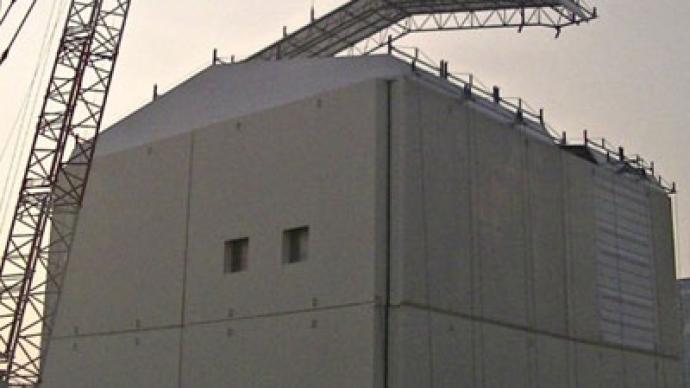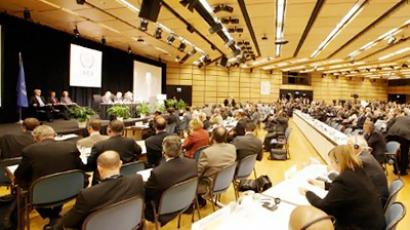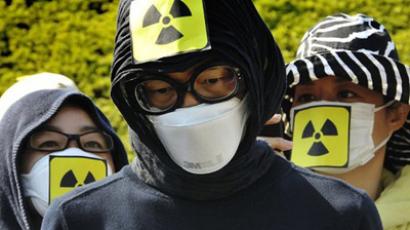Not gone fission: New fears at Fukushima

The radioactive gas Xenon has been detected at Fukushima Dai-Ichi, meaning that out-of-control nuclear fission might be still going on in the remnants of the active zone of reactor two.
The officials of the nuclear power plant have ordered to pump in boric acid as a precaution measure to stop the possible fission. The Tokyo Electric Power Co. (TEPCO) reported that tiny quantities of relatively harmless Xenon-133 and Xenon-135, a nuclear fission by-product with a half life of a little more than five days, were registered near the second reactor. At the same time it has been reported that no increases in temperature, pressure or radiation have been registered.The nuclear fuel of the second reactor followed the fate of the first and third, melting down and burning through the contour of the reactor. Experts say that at certain conditions nuclear fission could restart and lead to a new meltdown, but the likelihood of such an event is next to zero. They even question the fact that the gas that was registered has been radioactive Xenon as the quantity of it was too small and there is a room for mistake in conclusions.Currently the temperature at the hot zones of the reactors is been sustained at 100 degrees Celsius by sea water constantly pumped there.This news follows a recent report in the Atmospheric Chemistry and Physics journal, arguing that radiation fallout after the Fukushima catastrophe could be underestimated by as much as 80 per cent. The report claims the registered contamination with cesium-137 depicts only about 19 per cent of the radioactive debris which actually fell on Japanese territory. The rest was dissolved in the Pacific. It is believed that only two per cent of cesium from Fukushima will reach foreign coasts.Scientists from Europe and the US claim that after the earthquake and tsunami on March 11, the wreckage at the nuclear power plant caused emission of 35,800 terabecquerels of radioactive cesium-137 at the height of the disaster, whereas Japan's nuclear regulator officially stated in June that ‘only’ 15,000 terabecquerels of cesium-137 had been discharged.The catastrophe at Fukushima Dai-Ichi has also been responsible for discharged of 16.7 million terabecquerels of Xenon-133, “the largest radioactive noble gas release in history not associated with nuclear bomb testing,” said the report at Atmospheric Chemistry and Physics journal.Radioactive isotope cesium-137 has a half-life of 30 years, thus making it the major source of concern over public health in Japan for the nearest decades. Official Tokyo estimates in August stated that areas around the Fukushima Dai-Ichi plant would be uninhabitable for at least two decades due to debris that is still emitting radioactive materials. According to the World Nuclear Association, prolonged exposure to radiation causes leukemia and other forms of cancer.Atmospheric Chemistry and Physics journal scientists’ estimation puts Fukushima fallout to 42 per cent of that of the Chernobyl catastrophe in 1986.They also reported that it was the 9-magnitude earthquake that destroyed the power plant that started the nuclear core meltdown, with the tsunami only finishing the station off.














